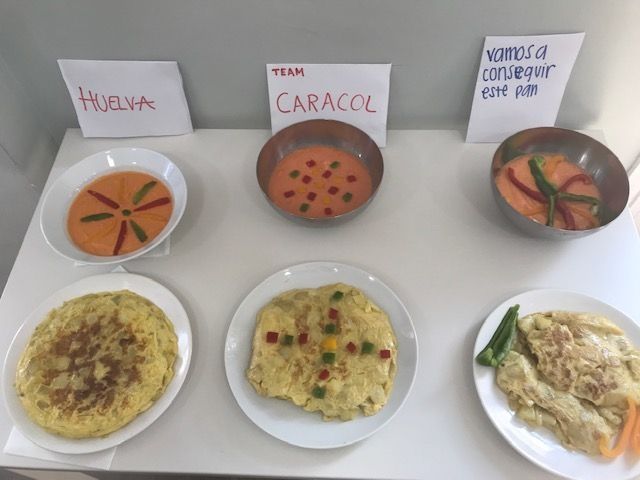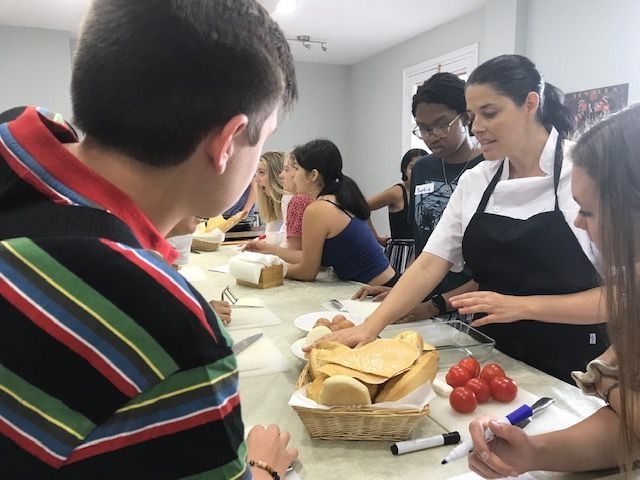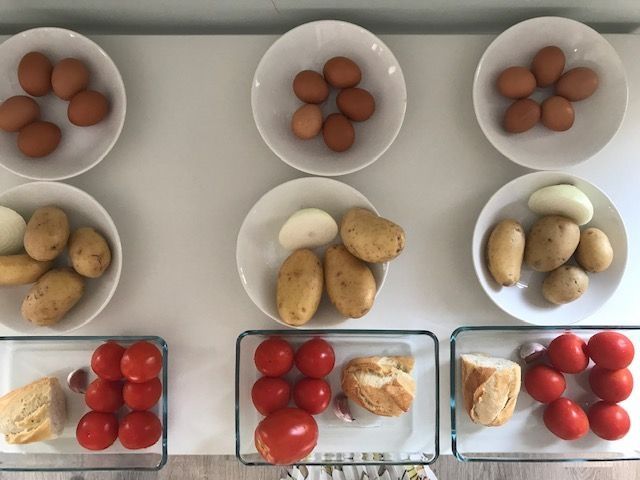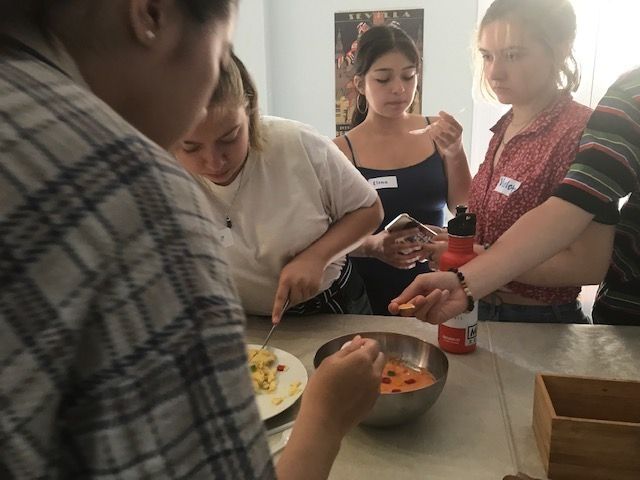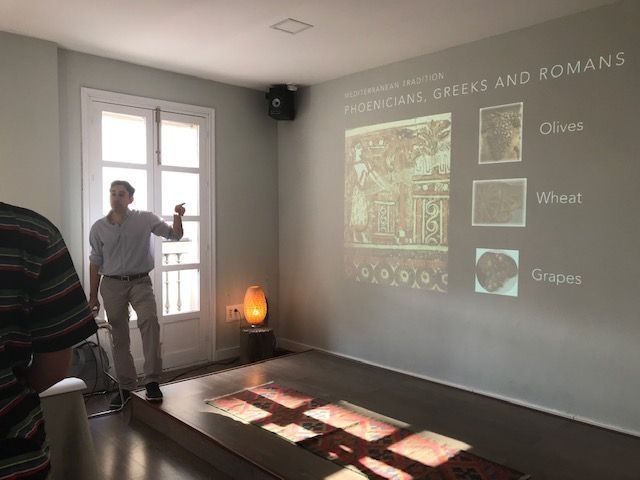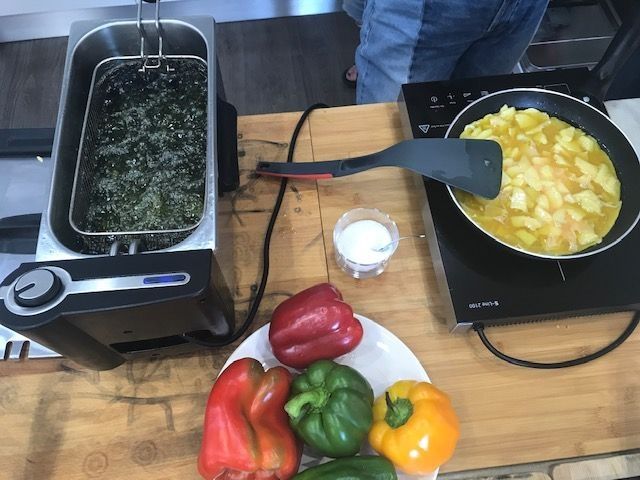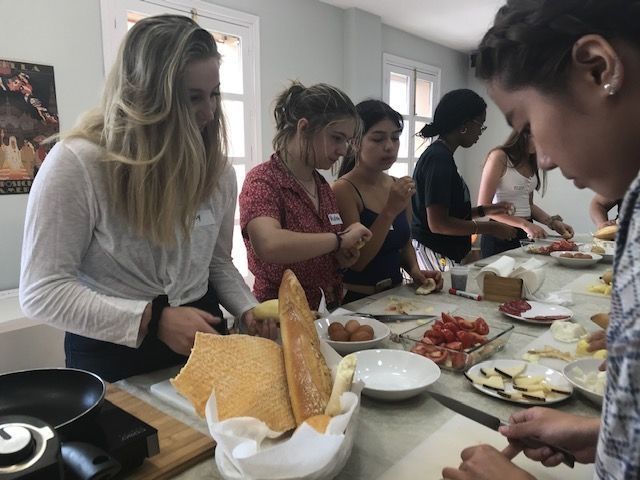Clase de Cocina
We´ve definitely been eating a lot of Spanish food - finally, it was time to learn to make our own! The students joined our friends at HablaWorld for a Spanish cooking class with a view of the famous Sevilla Cathedral. To start, they received a short presentation on origins of Spanish ingredients and recipes, the Mediterranean Diet, and historical context for Spanish cuisine. Then, they got a crash course in properly cutting and preparing our ingredients and instructions for how to prepare the recipes. Their challenge was to make a very traditional Spanish meal: salmorejo and tortilla de patata.
Salmorejo is very similar to gazpacho, which is perhaps the better-known cold tomato soup. Salmorejo contains more bread than gazpacho, giving it a creamier, thicker texture and slightly different color. Salmorejo is typical in Andalusia, and because it is served cold it is perfect for the hot summers in southern Spain. The trick to a perfect salmorejo is just the right balance of key ingredients: bread, tomatoes, olive oil, vinegar, garlic, and salt.
A Spanish tortilla may come as a surprise to someone who is accustomed to the tortillas of corn or flour common in North and South America. The tortilla de patata is actually a kind of omelette made from eggs, small potato wedges, and onion. Part of the challenge of the tortilla española is in the flipping technique in which the half-cooked tortilla is transferred onto a plate and then back into the hot pan, still maintaining a perfectly round and fluffy form.
In teams of five the students carried out the recipes from start to finish and snacked on Spanish cheese, meat and bread while they cooked. The final dishes were judged by the program leaders and cooking teachers on taste, texture, presentation and teamwork. We finished with the most important part of any cooking workshop: eating what you´ve learned! The knowledge of these simple and traditional recipes is one of the many special souvenirs the students will take back with them.
Related Posts

Group Adventures in Alicante
It’s truly heartwarming to witness the friendships and bonds that form so quickly during our high school summer abroad program in Alicante, Spain. Even though the students have known each... keep reading
How to Talk to Your Family and Friends About Your Summer Abroad in Palma
This blog post offers tips for Global Navigators on how to share their summer abroad experience in Palma with friends and family. From focusing on meaningful stories and journaling daily to staying connected and encouraging others to apply, it helps students reflect on their journey and express how it shaped them. It ends with a creative call to action—writing a letter to their pre-Mallorca self or sharing a favorite photo and story—to keep the experience alive even after returning home.

Student Spotlight: My Summer in Spain by Chisom Eke
A summer in Spain was something I once believed I would never experience—until now. From the Bronx to Barcelona, learning the cultural differences has been quite the ride. When I... keep reading
